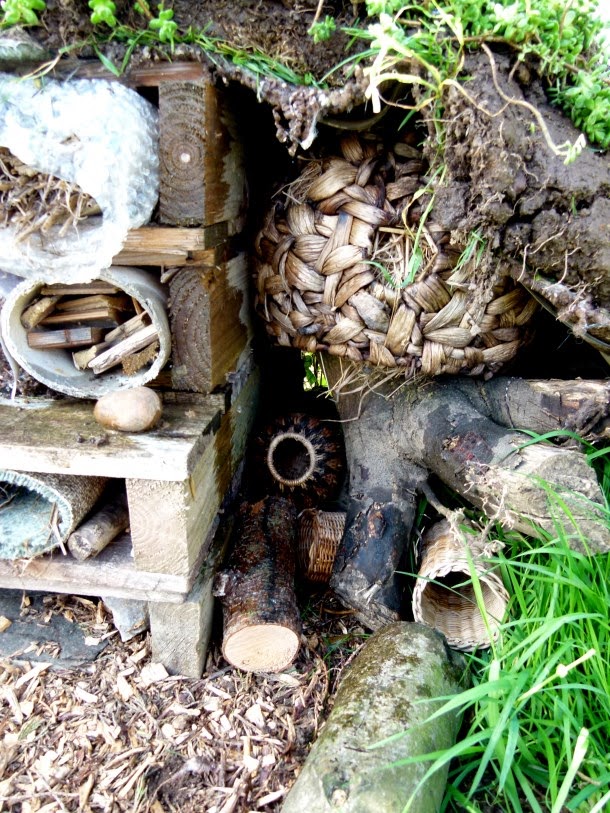When I roofed the insect hotel, lots of pieces of sedum broke off.
I saved all the pieces and I thought I`d blog how I`ve taken cuttings from them.
I hope people find it useful.
It really is quite easy and you don`t need any special equipment, just compost, sand and vermiculite.
I don`t even use rooting hormone powder.
This is what the pieces looked like when I started.
First of all mix together sand, vermiculite and compost.
I usually put in more compost so I suppose it is....
1 part sand
1 part vermiculite
2 parts compost
(I reckon you could also do it in ordinary garden soil.)
Next I fill a 24 compartment insert placed inside an ordinary seedtray.
These are the pieces ready to strip the lower leaves.
Here are the same pieces stripped.
Pop each piece into the tray and water well.
After that they won`t need too much water.
I sometimes break a bit of bare stem off if it`s too long
and sometimes you are lucky enough to find pieces which already have roots.
These are some I did earlier in the year.
And this is how they will eventually grow.
Finally they can be used for roofing, in sink gardens or in terracotta pots.
Sedums come in many differents colours and are very easy to look after.
Some of my special pots have spent time indoors over winter in greenhouses.
I didn`t think the continuous wet would do them much good.
Enjoy trying out this easy way to propagate plants and get the satisfaction of saving yourself money.
Good luck and let me know how you get on.

























































